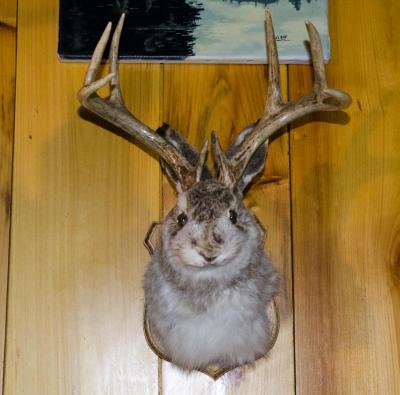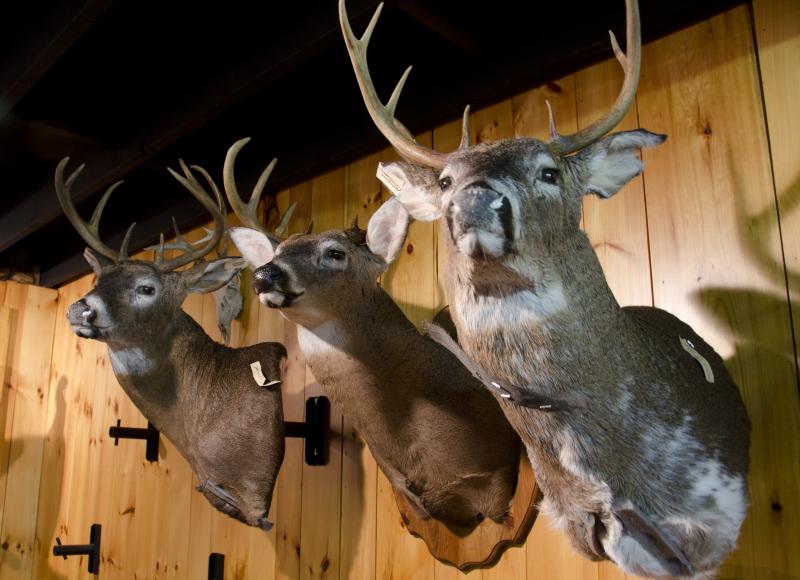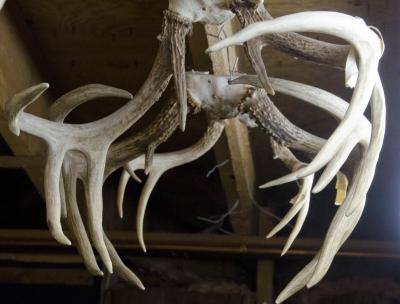Deer departed: Taxidermist preserves spoils of the hunt


What do you call someone who spends his nights alone in a basement hovering over dead animals?
Well, if you’re talking about the owner of Headquarters Taxidermy, you can just call him Jim.
For 20 years, Jim Holden has run his one-man taxidermy business from his basement in Rochester, working on everything from deer and bears to roosters and iguanas.
Holden, originally from New Bedford, was a commercial fisherman for 10 years before taking up taxidermy.
“I got to the point where it was time to leave, and I didn’t want to just get another job,” he said. “I loved hunting and heard about this taxidermy school.”
Holden spent three months learning the trade at the Northwest Iowa School of Taxidermy, but never expected to turn it into a career.
With the help of his wife Lisa, a nurse, Holden was able to start his basement business.
“I couldn’t do this without Lisa,” he said.
Now, two decades later, Holden said he really enjoys the solitude of his job, which he called “the quiet industry.”
Holden gets the occasional pet cockatoo to stuff and unusual projects such as adding antlers to a rabbit (aka a jackelope), but he sees his work mainly as an extension of the ancient system of hunting.
“There are a lot of different feelings towards people who hunt. We all hunt. We just don’t realize it,” said Holden, who doesn’t believe in hunting purely for sport. “Hunters are just holding onto a way of life that doesn’t exist anymore.”
Holden said hunting is a dying art, but so far his business isn’t hurting.
About 75 percent of his clientele are return customers, who wait nine to 12 month for their animals.
“Everything that comes in is in a natural state,” said Holden, who receives the animal skins.
For each animal, Holden tans the hide, and then sews it around a form.
Forms come in a variety of species, sizes and poses, from a rattlesnake ready to pounce to a bear on the prowl.
And at $500 to $700 for many forms, Holden said getting the measurements of each skin right is crucial.
Holden carefully sews each skin in place. To make sure the animals looks natural, he puts finishing touches on them such as painting a buck’s nose so it looks wet.
“There’s always room for improvement,” said Holden. “My work is getting better. This is an art.”
And, for the record, Holden doesn’t get any particular thrill in stuffing cockatoos at midnight.
An avid outdoorsman, he doesn’t want to waste daylight in a dank basement. “When the sun is out, I like to be out,” said Holden.
For more information on Headquarters Taxidermy visit Holden's website here or call 508-763-8571.















